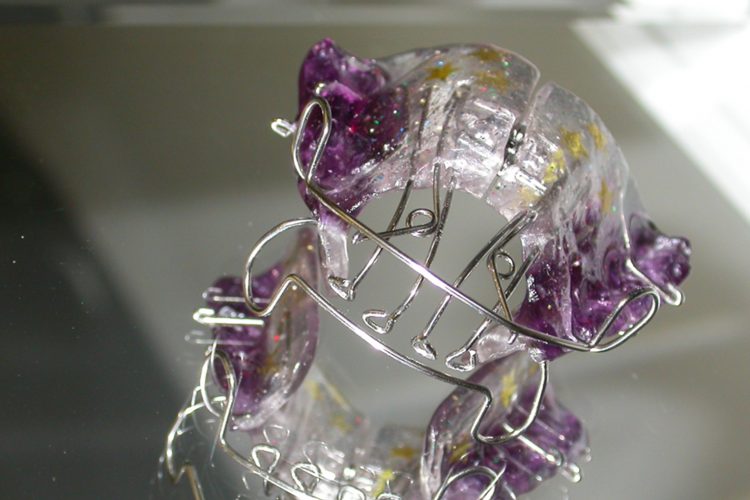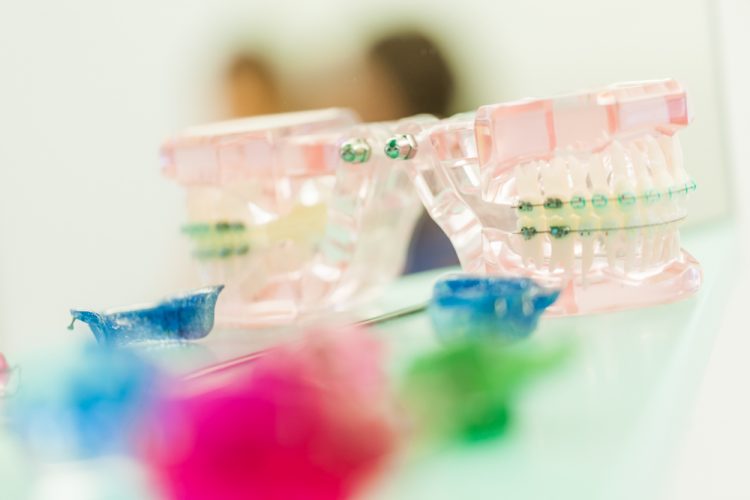Properly positioned teeth and nice and wide smile are important for your child's overall health, but they are also important factors for his or her self-confidence and social trust.
In order to achieve the most acceptable function of all the bone, teeth and muscular structures of the face, it is important that your child visits the dentist on time. This involves performing the first orthodontic examination between the age of 7 and 9 of the child. On that occasion, we can determine whether the condition of the child's teeth and jaws require special treatment, ie. Whether an appliance should be used in the treatment for correcting the teeth.
In order to achieve the most acceptable function of all the bone, teeth and muscular structures of the face, it is important that your child visits the dentist on time. This involves performing the first orthodontic examination between the age of 7 and 9 of the child. On that occasion, we can determine whether the condition of the child's teeth and jaws require special treatment, ie. Whether an appliance should be used in the treatment for correcting the teeth.
After the orthodontic diagnosis is being made, the ORTO4U team will decide which type of Appliance is the best for your child. There are several types of the Appliance for correcting teeth with children - movable plate devices, functional apparatuses, myofunctional apparatuses, extraoral apparatuses, transparent foils (Invisalign), as well as fixed apparatuses. Depending on the orthodontic problem your child may have, ORTO4U can offer you therapy with a specific apparatus.
Removable appliances (Picture 1) are most commonly used from the moment of the emergence of the first permanent tooth to the completion of permanent dentition (emergence of all permanent teeth). During that period, your child may show a mismatch between teeth and jaw size, which may be accompanied by premature loss of lateral milk teeth. In order to act preventively, we advise that you make the diagnosis as soon as possible by visiting your dentist and begin promptly with the proposed therapy if it is determined that your child needs it. Removable appliances can be used to straighten the teeth or as a preparation for later therapy with fixed appliance if the condition of the teeth and jaw require it.

Removable appliances (Picture 1) are most commonly used from the moment of the emergence of the first permanent tooth to the completion of permanent dentition (emergence of all permanent teeth). During that period, your child may show a mismatch between teeth and jaw size, which may be accompanied by premature loss of lateral milk teeth. In order to act preventively, we advise that you make the diagnosis as soon as possible by visiting your dentist and begin promptly with the proposed therapy if it is determined that your child needs it. Removable appliances can be used to straighten the teeth or as a preparation for later therapy with fixed appliance if the condition of the teeth and jaw require it.
Children gladly accept myofunctional appliances made of elastic material (silicone) that are ideal for eliminating bad habits (mouth breathing, tongue pushing, thumb sucking, etc.). These habits are most commonly present in milky and early mixed dentition. Good news is that this type of appliance for correcting the teeth with children can also have a slight effect on already occurring irregularities in bite and teeth position. As the child grows, orthodontic therapy is continued if needed by another type of orthodontic appliance.
Extraoral appliances are used to correct the irregularities of bone growth of the upper or lower jaw (skeletal anomalies). They are characterized by strongholds on the head or neck that are attached to a fixed Appliance, thus producing the forces necessary to move or stabilize the teeth. Most commonly used are J-Hook, Hedgear apparatuses and Dealaire masks. Extraoral appliances are generally only worn at home.
Extraoral appliances are used to correct the irregularities of bone growth of the upper or lower jaw (skeletal anomalies). They are characterized by strongholds on the head or neck that are attached to a fixed Appliance, thus producing the forces necessary to move or stabilize the teeth. Most commonly used are J-Hook, Hedgear apparatuses and Dealaire masks. Extraoral appliances are generally only worn at home.
Extraoral appliances are used to correct the irregularities of bone growth of the upper or lower jaw (skeletal anomalies). They are characterized by strongholds on the head or neck that are attached to a fixed Appliance, thus producing the forces necessary to move or stabilize the teeth. Most commonly used are J-Hook, Hedgear apparatuses and Dealaire masks. Extraoral appliances are generally only worn at home.

Extraoral appliances are used to correct the irregularities of bone growth of the upper or lower jaw (skeletal anomalies). They are characterized by strongholds on the head or neck that are attached to a fixed Appliance, thus producing the forces necessary to move or stabilize the teeth. Most commonly used are J-Hook, Hedgear apparatuses and Dealaire masks. Extraoral appliances are generally only worn at home.




